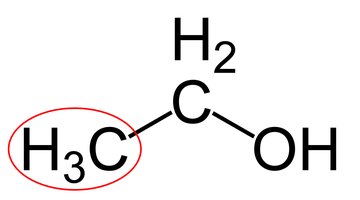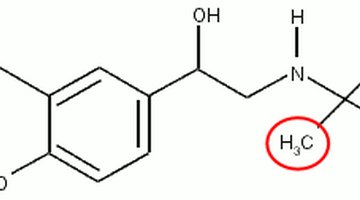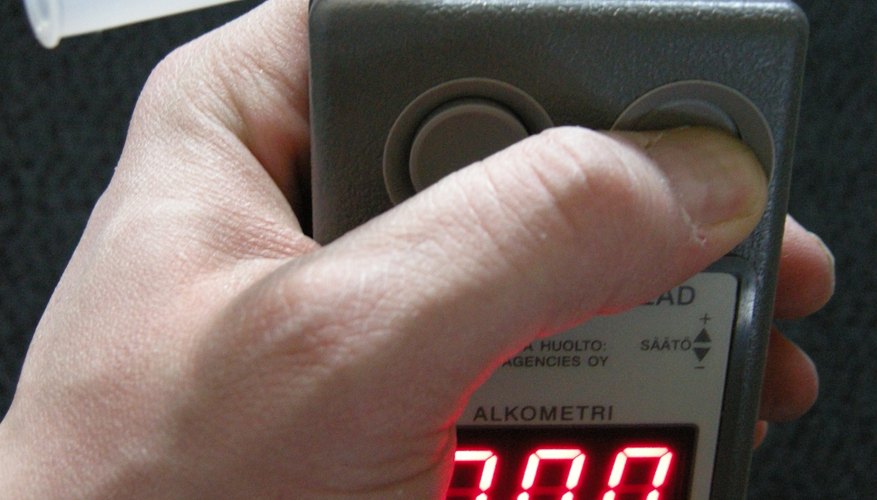Law enforcement and other authorities commonly measure suspects' blood alcohol level using the "breathalyser" or breath alcohol analyzer test. The reading from a breathalyser test can determine whether you lose your license or even spend time in jail. If you use an inhaler for asthma or breathing problems, however, a breath alcohol test can produce a false positive reading, even if you haven't had any alcohol to drink. If you have had some alcohol, using the inhaler can increase breathalyser readings for some time after. Asthma inhalers and other compounds, called "interferents," can skew breath alcohol analyzer test results.
How Breath Alcohol Analysis Works

Currently, most breath alcohol analyzer machines use a method called infrared spectroscopy. When you breathe into the breathalyser machine, it captures your breath in a small sample chamber where beams of infrared energy shoot through it. Any compounds in your breath that contain a methyl group in their chemical structure---as alcohol does---absorb more infrared energy. The breathalyser measures the amount of energy absorbed. When you drink alcohol, some of it is absorbed into your bloodstream. Your lungs then release a very small amount as you breathe. For every part of alcohol found in your breath, there are 2100 parts alcohol in the blood. Thus, in order to convert the amount of alcohol compounds in your breath into a blood alcohol level, the reading from your breath is multiplied by 2100.
- Currently, most breath alcohol analyzer machines use a method called infrared spectroscopy.
- When you breathe into the breathalyser machine, it captures your breath in a small sample chamber where beams of infrared energy shoot through it.
Interferents

Measuring blood alcohol level with a breathalyser test causes problems because so many other compounds besides ethanol alcohol contain a methyl group. Asthma inhalers, one very common culprit, sometimes contain 30 per cent or more alcohol that isn't absorbed into the bloodstream but is used as a propellant. Albuterol, the active ingredient in many asthma inhalers, also contains a methyl group and can trigger a false positive reading from a breath alcohol analyzer.
Length of Effect
In recent years, breath alcohol analyzer results came under fire in legal cases because of false positives caused by interferents. In some places, such as in Illinois, the laws regarding breathalyser tests were changed to add prohibitions for ingestion of any foreign substances within 20 minutes of taking the test in order to reduce false positives. A 1998 study published in the Proceedings of the Western Pharmacology Society found that while non-drinking subjects who used an inhaler registered readings as high as 0.120 on a breathalyser test, readings returned to 0.0 after 6 minutes. However, in subjects who had ingested some alcohol, the influence of the inhaler on breathalyser scores continued past the 20-minute mark. The investigators recommend that if the subject has used any medication, a breath alcohol test shouldn't be done and a blood alcohol test should be used instead.
- In recent years, breath alcohol analyzer results came under fire in legal cases because of false positives caused by interferents.
- A 1998 study published in the Proceedings of the Western Pharmacology Society found that while non-drinking subjects who used an inhaler registered readings as high as 0.120 on a breathalyser test, readings returned to 0.0 after 6 minutes.
Other Interferents
Newer types of machines coming onto the market now more accurately identify only ethanol alcohol when doing a breath test. However, if you're pulled over and asked to take a breath alcohol test, consider refusing the test and requesting a blood alcohol test instead if you've been exposed to any of these possible sources of false readings: Inhalers for asthma or breathing problems within 30 to 60 minutes; strong mouthwash in the last 10 minutes; dental adhesive; denture cleaner; industrial solvents (this can include working with lacquer or similar substances for multiple days, as the substances can be absorbed through your skin and show up in a breath alcohol test). Also, if you're diabetic and have low blood sugar, you may have acetone in your blood. If you smoke or have been smoking heavily, a breathalyser can misread acetaldehyde from cigarettes.
- Newer types of machines coming onto the market now more accurately identify only ethanol alcohol when doing a breath test.
- If you smoke or have been smoking heavily, a breathalyser can misread acetaldehyde from cigarettes.
Missing Decimal Point
In the original 1990 case that made the breath alcohol analysis test legally admissible, an expert stated that the error rate for the machines in his testing was 2.3 per cent. However, a later analysis of the data revealed the error rate to be 23 per cent---a significant error that paved the way for widespread acceptance of and misplaced confidence in breathalyser testing. If you do find yourself having a breath alcohol analysis done, let the investigators know about any factors that might affect your test results. If you have questions about the legal ramifications or are involved in a case where you think asthma inhalers or other interferents influenced your breathalyser reading, contact a local lawyer.
- In the original 1990 case that made the breath alcohol analysis test legally admissible, an expert stated that the error rate for the machines in his testing was 2.3 per cent.
- If you have questions about the legal ramifications or are involved in a case where you think asthma inhalers or other interferents influenced your breathalyser reading, contact a local lawyer.
